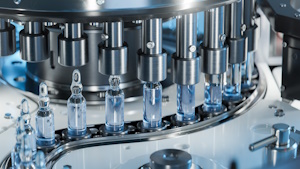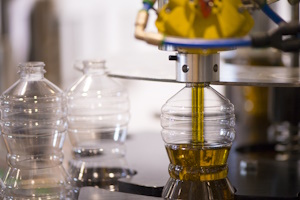CIP and SIP Cleaning Processes

Figure 1: Processes that require sterilization, such as medical processes, require intensive cleaning methods such as CIP and SIP
Clean-in-place (CIP) and Steam-in-place (SIP) are automated methods of cleaning and sterilizing process systems. CIP and SIP help industries meet strict hygiene and safety regulations, particularly in sensitive sectors like food, beverage, and pharmaceuticals. The main features of CIP and SIP are:
- Time efficiency: CIP and SIP processes are automated, significantly reducing the time spent on manual cleaning and sterilization.
- Consistency: These processes guarantee consistent cleanliness, minimizing the risk of human error. They can clean and sterilize areas that are not easily accessible to humans.
- Safety: CIP and SIP enhance safety by reducing employee exposure to harmful cleaning chemicals and eliminating the risk of microbial contamination in production.
- Extended equipment lifespan: Regular and proper cleaning and sterilization can prolong the life of the machinery, reducing the frequency and cost of replacements.
- Regulatory compliance: CIP and SIP processes help meet industries' stringent hygiene and sterilization regulations.
- Elimination of transfer risk: Since sterilization and cleaning are done in place, there's no need to transfer materials to a separate area, reducing the risk of contamination.
Table of contents
Applications
CIP and SIP use chemicals, heat, and water to clean machinery, including components such as pipes, filters, and fittings, without disassembling them. This approach is far more efficient than disassembling and cleaning equipment by hand, which is highly time-consuming when performed on an industrial scale. Here are some real-world applications of CIP and SIP processes:
- Food and beverage: CIP and SIP systems ensure cleanliness and sterility between production batches, maintaining product safety and quality.
- Pharmaceutical: These processes prevent cross-contamination between drug batches and maintain sterile environments, meeting regulatory standards.
- Biotechnology: CIP and SIP clean and sterilize lab equipment, preventing contamination of biological samples.
- Brewery: These systems maintain the quality and taste of beer by cleaning and sterilizing brewing vessels and piping systems.
- Healthcare: Hospitals use CIP and SIP processes to sterilize surgical instruments and medical devices, preventing the spread of infections.

Figure 2: CIP and SIP cleaning techniques are employed in the food and beverage industry to ensure cleanliness.
CIP and SIP processes
CIP and SIP processes are typically automated to ensure precision and repeatability. The exact procedures vary depending on the type of equipment and the industry’s specific requirements.
Clean-in-place
CIP uses a combination of heat, chemicals, and water to sanitize equipment. The chemicals used in CIP cleaning include:
- Sodium hypochlorite (Hypo)
- Sodium hydroxide (Caustic soda)
- Peracetic acid (PAA)
- Phosphoric and nitric acids
- Chlorine dioxide
CIP enables the internal surfaces of sealed systems to be cleaned without disassembly (or only to a limited extent). A typical CIP cycle takes between 60 and 90 minutes. The cleaning temperatures can reach 100 °C (32 °F). It's necessary to keep the flow rate of cleaning media typically between 1.5 and 3 m/s to eliminate all contaminants effectively.The main steps involved in the CIP process are:
- Pre-rinse: The system is first rinsed with water.
- Chemical cleaning: Following the pre-rinse, a cleaning solution, typically an alkaline solution, is circulated throughout the system.
- Intermediate rinse: After the chemical cleaning, an intermediate rinse with water removes the cleaning solution. This prevents any contamination of the chemical cleaning solution in the next step.
- Acid rinse: This step is optional and may not be necessary for all systems. The acid rinse neutralizes the alkali residues and removes mineral deposits.
- Final rinse: The system is rinsed again with water to remove any remaining cleaning agents. The final rinse water can be sampled and tested to ensure the system is clean.
- Sanitizing: The system is disinfected through heat or a chemical sanitizer.
Steam-in-place
The SIP process continues the CIP process, including an extra sterilization step. Essential hygienic processes are sterilized after the main CIP process, guaranteeing the elimination of any remaining active microorganisms in the system. This is achieved by applying high temperatures, typically 120 - 135 °C (248 - 275 °F), using either hot water or saturated pure steam. SIP is a crucial step in industries producing pharmaceuticals and ultra-pasteurized milk. The various stages in the steam-in-place process are:
- Pre-sterilization: This initial step involves cleaning the equipment thoroughly using the CIP process to ensure it is free from any product residues or soils.
- Heating: The SIP process usually involves the use of steam. In this stage, steam is introduced into the equipment to raise the temperature to a level that kills microorganisms. The temperature and duration of this stage depend on the type of equipment and the level of sterilization required.
- Holding: The high temperature is maintained for a specific period to ensure complete sterilization.
- Cooling: After sterilization, the equipment is cooled down, usually with sterile air or sterile cooling water.
- Post-sterilization: The product is ready for use after cooling the equipment. Some systems may require a final rinse with sterile water to remove condensation.
Valves for CIP and SIP processes
In CIP and SIP processes, it's crucial to use valves that can be thoroughly cleaned or sterilized without being disassembled or removed from the system. The main concern with valves like ball valves or gate valves is that they have internal areas that might not be completely accessible to the cleaning or sterilizing solutions, which may lead to contamination.
In both CIP and SIP procedures, valves that are self-draining and have minimal dead legs (areas where the fluid can stagnate) are preferred. These usually include diaphragm valves or sanitary butterfly valves, which are designed to be cleaned and sterilized in place and have no areas where product or cleaning solutions can be trapped. Read our sanitary grade valve article for more details.
The impact on seals
CIP or SIP can affect the product seals. The chemicals and extremely high temperatures can affect the longevity of seals, potentially shortening their lifespan. The following factors impact the lifetime of the seal during SIP and CIP process:
- Cleaning temperature
- The concentration of the CIP cleaning agents
- The seal design and elastomer material
The combination of pressure, load, and high temperatures can intensify the deterioration of certain elastomer materials. Also, the complex formulation of chemicals used in CIP and SIP can damage the elastomer seals.
Choosing the right elastomer seals
The appropriate material for the elastomer seal is crucial for CIP and SIP processes. A non-compliant material can result in costly downtime. When selecting a seal for food, dairy, or pharmaceutical application, it's crucial to understand which materials have the best chemical and temperature resistance.
- VMQ and HNBR: VMQ (silicone rubber) and hydrogenated acrylonitrile butadiene rubber (HNBR) are unsuitable for most CIP and SIP applications.
- FKM: Fluoroelastomer (FKM) materials perform poorly with alkaline and acidic media.
- EPDM: Ethylene propylene diene monomer (EPDM) is a good choice for sealing aseptic technology but may not be suitable for more intensive CIP measures.
- FFKM: FFKM (Perfluoroelastomer) is resistant to chemical media and high temperatures, making it the best material for CIP and SIP processes.
FAQs
What are CIP and SIP processes?
CIP (Clean-in-place) and SIP (Sterilization-in-place) are automated processes used to clean and sterilize machinery, vessels, or pipes without disassembly. CIP uses chemicals, heat, and water, while SIP uses steam for sterilization.
What industries commonly use CIP and SIP processes?
CIP and SIP processes are primarily used in industries that require high levels of cleanliness and sterility, such as food and beverage, pharmaceutical, biotechnology, and cosmetic industries.




